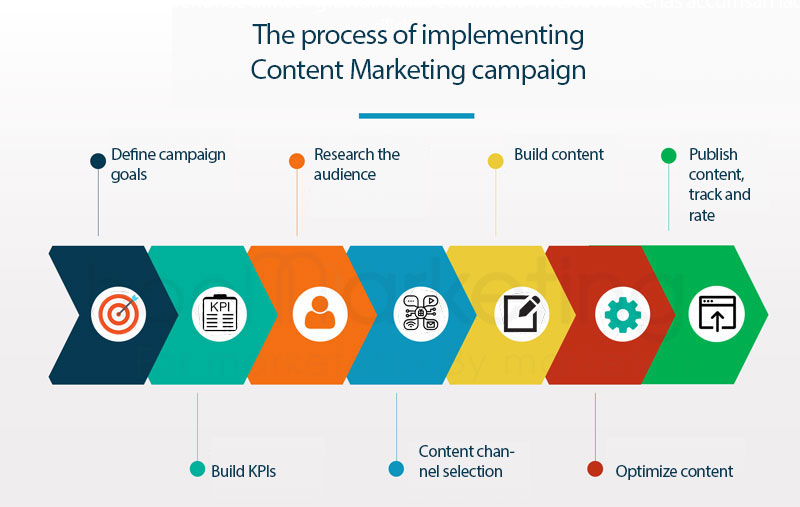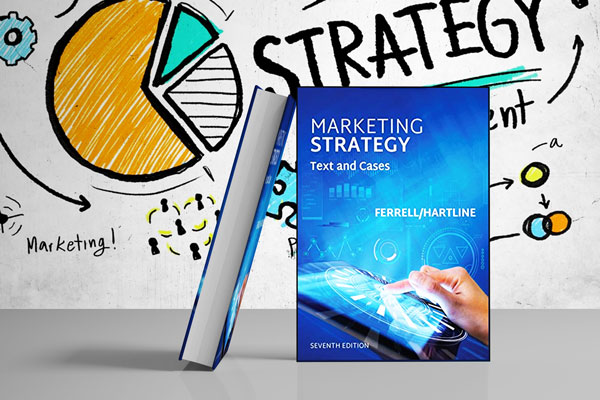
What is Content Marketing? Implementing Content Marketing campaign

What is Content Marketing? Content Marketing trends in recent years. A step-by-step guide to implementing a complete Content Marketing strategy.
What is Content Marketing?
Content Marketing is a strategic approach in which individuals or businesses focus on creating and distributing valuable content that is closely related to the interests of readers. and products/services of the business to attract and retain the identified audience, as well as create incentives to encourage them to take actions beneficial to the business (purchase, download the application). use, register, conduct surveys, etc.).
Short history of Content Marketing
The term "Content Marketing" was coined in 1996, during a discussion among journalists at The American Society of News Editors (ASNE). The user of this phrase in that discussion was journalist John F. Oppedahl. However, he also does not think that the phrase will become a technical term commonly used in the marketing world later.
Nhà báo John F. Oppedahl
Content Marketing trends in recent years
As the Internet becomes more and more developed and popular, the need to view digital content is increasing, and of course, the methods of implementing Content Marketing also become diverse. Most of today's sales websites have blog entries to both provide useful information for readers, improve conversion rates, and increase sales. Some businesses with abundant budgets regularly spend money to put PR articles and advertisements on major online newspapers. The advent of social networks (Facebook, Tweeter, Instagram...) helps small and medium businesses reach their target customers through Social Network Content Marketing campaigns. In addition, Content Marketing in the form of Video (Youtube, Tiktok...) is becoming a trend in recent years.
"The percentage of Content Marketing activities on online channels (Online) is increasing, while the rate of traditional channels (Offline) is decreasing.."
The process of implementing Content Marketing campaign
A Content Marketing campaign should satisfy the following criteria to be most effective:
Good and quality content: Of course, the soul of every Content Marketing campaign always lies in content quality. A campaign with good quality content will help increase the conversion rate of actions (purchase, app download, registration...), helping to create a good impression of the brand on readers. In addition, in some campaigns, building good content also helps create a viral effect in the community, helping businesses reach more readers. If the Content Marketing strategy uses blogs as the main content distribution channel, building valuable content for readers also helps the website to rank high on search engines (Google, Bing...).
Choose the right content distribution channel for your audience: Think about it, is a Content Marketing campaign with an elderly audience effective if deployed on social media channels? Or another campaign with an audience of young people in their 20s and 30s, will it be effective if deployed on traditional media channels?
Steps to carry out a Content Marketing campaign
In general, the process of building & implementing Content Marketing campaigns consists of 7 steps: Determining strategic goals, Developing KPIs, Researching and understanding audience, Choosing content distribution channels, Developing content distribution channels. Content creation, Content optimization and distribution channels, Content publishing, monitoring and evaluation.
Define campaign goals
First, businesses need to determine the goals set out in the Content Marketing campaign. Determining the campaign goal will help businesses set up appropriate KPIs, correctly estimate the number of "content products" needed, and the style of content presentation for the campaign to be effective.
Here is one of the goals often set in Content Marketing campaigns:
- Raise the level of brand recognition: Through content products (articles, publications, videos...), readers (audience) get the initial exposure, and certain impressions about the brand. of the enterprise.
- Information collection: Collecting information (Name, Email, Phone number...) that readers leave when interacting with product content content. The collected information will be exploited by businesses through other Marketing programs.
- Sales: Through the content in content products, readers are led to the decision to buy products/services of the business to solve the problems posed previously.
- Care & support: Some products/services have a high degree of complexity in terms of usage. Therefore, user manuals (articles, videos) will be extremely practical and useful for customers who have purchased and used your products/services.
Note: Enterprises do not have to choose only one of the Marketing objectives, but can include many, as long as they are placed in a balanced ratio of importance.
For example: In December 2020, ABC enterprise deployed a Content Marketing campaign with 2 main goals, in which the sales target accounted for 30% in importance, information collection accounted for 60%, and improved brand awareness accounts for 10%.
The inclusion of many goals in a Content Marketing campaign without clearly defining the importance ratio will make it very easy for businesses to lose their direction in the process of building and implementing the campaign, from which the effectiveness of the campaign will be lost. campaign will be reduced.
Build KPIs
Building KPIs (Key Performance Indicators) is a step to concretize the goals set out in the campaign. A KPI consists of two main components, the indicator name (indicator) and the number to achieve (target value) to accomplish the goal. Example (Number of readers leaving information to reach: 500 people).
There are many types of metrics that are often applied as KPIs for Content Marketing campaigns such as the number of readers reaching, the number of readers leaving information, the number of readers interacting with the content, the average duration. readers see the content, the number of readers buy...
Note that the set KPIs need to meet the following criteria:
- Measurable: The set of indicators can be measured (exactly or relatively) through one or more defined instruments.
- Attainable: The number to be achieved must be within the capacity of the resources that the business has.
Research the audience
Researching and learning about the audience that the business wants to target will help businesses determine the right content to include in the articles, videos... of the campaign, presentation style, and style. the right language to apply, the content distribution channels that can be used to reach them...
Content channel selection
Depending on the characteristics of the audience that you have researched and learned in the previous step, you can determine the content distribution channels (content channels) that you can apply to bring your content. the highest efficiency.
For example, in case the audience that the business wants to target is young people (students, students) living in areas of the country with high Internet coverage, the appropriate content channel to choose will be website, social network, Youtube... In another case, the audience is middle-aged to elderly people, living in countries with limited ability to access technology, then the content channel is suitable. Suitable publications will be publications such as newspapers, magazines, books...
Build content
After completing the above steps (Determining campaign goals, Developing KPIs, Researching & understanding your audience, Choosing content distribution channels), businesses can start implementing the construction phase. Content for Content Marketing campaigns. Thanks to "Define campaign goals" and "Build KPIs", businesses can build appropriate content frameworks or scenarios to lead readers. Thanks to "Research & understand the audience", businesses can apply the right style of language and presentation to attract and create the best impression with those readers. The "content channel" that businesses choose in some cases also partially affects the content that businesses provide to readers such as duration (short, long), form (text, images, videos). ), content details (with or without elements of violence, drugs, gambling, 18+...).
An optimal article or video should have a content frame/script divided into 3 main parts:
- The opening part: Pose the problem to attract the attention and interest of the readers.
- Body: Solves the problems given in the opening.
- Conclusion: Draw conclusions, direct readers to take action (register, download apps, purchase, like, share, comment...)
Optimize content
In addition to content-related factors, there may be a number of other factors that need to be optimized before being published, depending on the content channel that the business has chosen. For example, for content products that are articles on the website, SEO optimization is extremely necessary so that these articles can be easily searched through search engines such as Google, Bing, and Yahoo. .. For video content products, businesses can consider including language subtitles to reach audiences of other countries. Especially, for the publication channel, optimization is extremely necessary because once published, it is very difficult and expensive for businesses to adjust the content and form of those publications.
Publish content, track and rate
After the above preparations have been completed, businesses can publish content so that they begin to reach audiences.
Monitoring and evaluation needs to be done so that businesses can know how much their campaign achieves compared to the KPIs established in step 2. For content channels via the Internet, there are quite a few. Many tools help businesses to track and extract reports on readers' behavior such as Google Analytics, Google Search Console, Youtube's Analytics tool, Facebook... thereby greatly supporting the aggregation process. result data.
So we have gone through all the steps of implementing a Content Marketing campaign. If you have any questions or comments, you can leave a comment below. Have a nice day studying & working
















